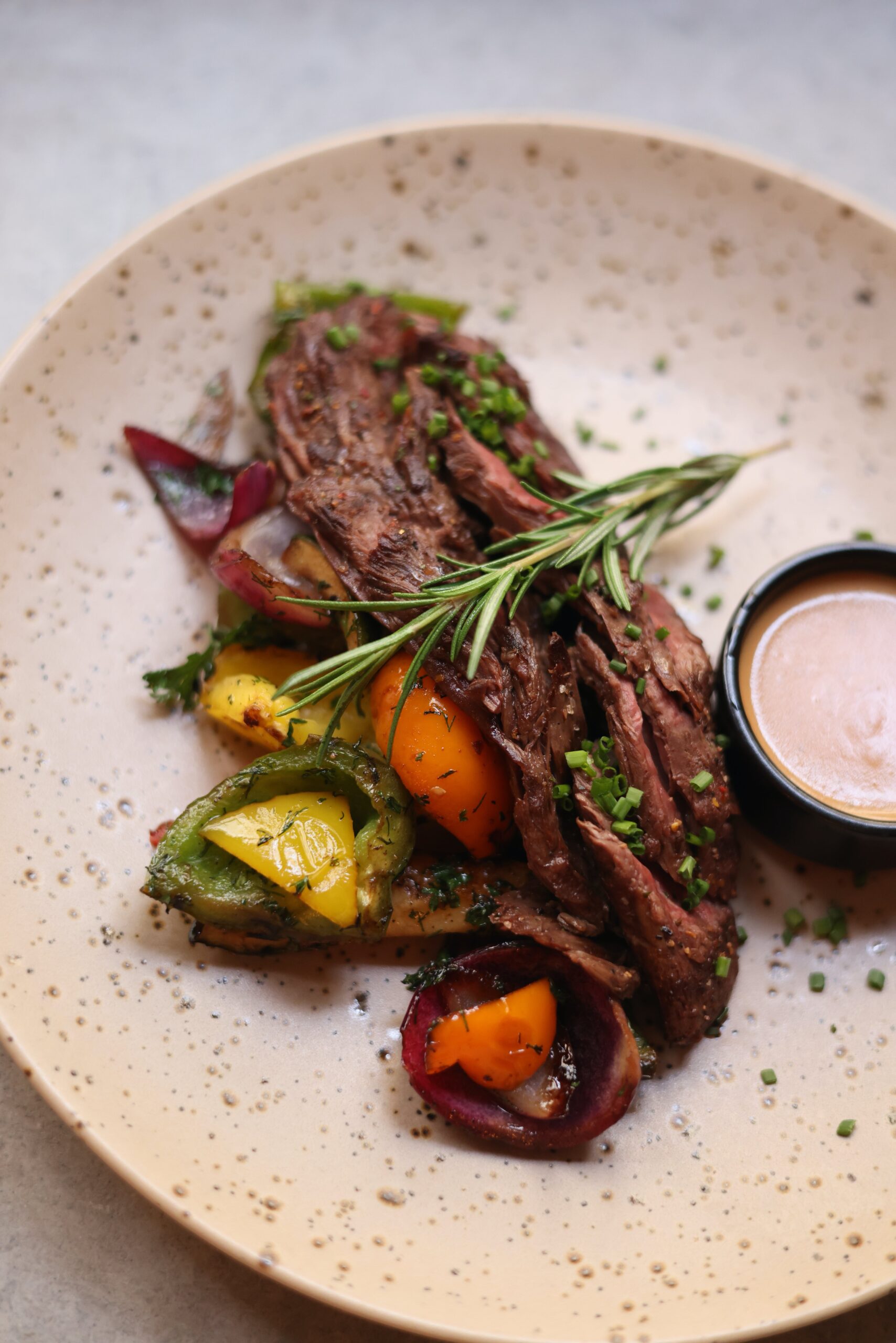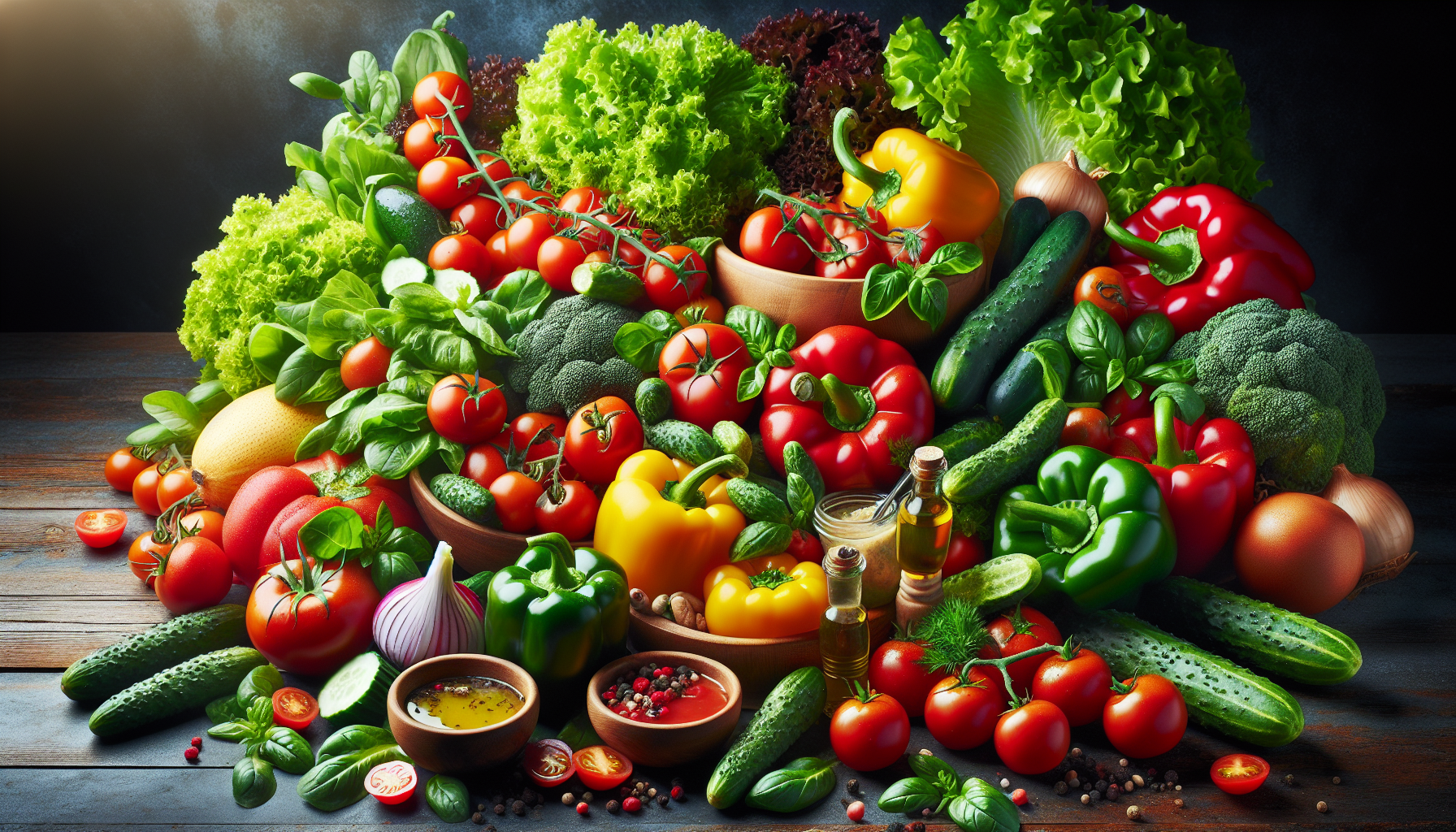Indulge in the realm of flavorful salads with the power of homemade dressings. Tastepan’s tantalizing collection of nutritious and delicious recipes prioritizes your well-being without compromising on taste. With our expert advice and dietary tips, you can embrace healthy eating effortlessly. Unleash your creativity in the kitchen and take control of your salad’s flavor by making your own dressings. Elevate your salads from ordinary to extraordinary with the perfect combination of ingredients that you choose. Nourish your body and delight your taste buds with the power of homemade salad dressings.

Benefits of Homemade Salad Dressings
When it comes to salad dressings, making your own at home offers a multitude of benefits. Not only do homemade dressings allow you to have control over the ingredients you use, but they also provide a healthier alternative to store-bought options. Homemade dressings are often made with fresher ingredients, reduced sodium, and without artificial additives, making them a fantastic choice for those looking to prioritize their well-being. Additionally, making your own dressings allows you to tailor them to your preferences, ensuring that every salad you make is a personalized culinary experience.
Healthier Ingredients
One of the primary advantages of homemade salad dressings is the ability to choose healthier ingredients. When you make dressings from scratch, you have the freedom to select the freshest, most wholesome ingredients available. Instead of relying on processed and packaged options, you can opt for organic and local produce. By using high-quality ingredients, you can ensure that your dressings are packed with nutrients and free from harmful additives.
Reduced Sodium
Another significant benefit of homemade salad dressings is the reduced sodium content. Store-bought dressings often contain excessive amounts of salt, which can negatively impact your health if consumed in excess. When making your own dressings, you can control the amount of salt you add, allowing you to create flavorful dressings without compromising your sodium intake. This is particularly important for individuals who are on a low-sodium diet or trying to reduce their overall sodium consumption.
No Artificial Additives
Many store-bought dressings are loaded with artificial additives, including preservatives, colors, and flavors. These additives are often used to prolong the shelf life of the dressings and enhance their taste. However, they can be detrimental to your health in the long run. By making your own dressings, you eliminate the need for artificial additives altogether. You can rely on the natural flavors of fresh ingredients and avoid the potential risks associated with consuming harmful chemicals.
Tailored to Your Preferences
Perhaps one of the most enjoyable aspects of making homemade salad dressings is the ability to tailor them to your preferences. Everyone has different taste buds and culinary preferences, and by making your own dressings, you can create flavor profiles that excite your palate. Whether you prefer a tangy vinaigrette, a creamy ranch, or a zesty citrus dressing, the choice is entirely yours. Experimenting with different ingredients, spices, and herbs allows you to discover taste combinations that suit your unique preferences.
Better Nutritional Value of Homemade Salad Dressings
In addition to the benefits mentioned above, homemade salad dressings offer better nutritional value compared to their store-bought counterparts. By using fresh ingredients, retaining higher nutrient levels, controlling portion sizes, and balancing macronutrients, homemade dressings can significantly enhance the nutritional content of your salads.
Fresh Ingredients
One of the most significant advantages of homemade dressings is the use of fresh ingredients. When you prepare dressings at home, you have the freedom to choose the freshest vegetables, herbs, and spices available. Fresh ingredients not only provide superior flavor but also retain higher nutrient levels. By incorporating fresh produce into your dressings, you can ensure that your salads are not only delicious but also packed with essential vitamins, minerals, and antioxidants.
Higher Nutrient Retention
The process of making homemade dressings allows for better retention of essential nutrients. Unlike commercially prepared dressings that undergo extensive processing and preservative treatment, homemade dressings are made using minimal processing methods. This helps to preserve the nutritional integrity of the ingredients used. The fresher the ingredients, the higher the nutrient content, which in turn translates to a more nutritious salad dressing.
Controlled Portion Size
Another advantage of making your own dressings is the ability to control portion sizes. Store-bought dressings often come in large bottles, making it easy to pour more than necessary onto your salad. This can lead to excess calorie intake and unhealthy dietary habits. By making dressings at home, you can control the portion sizes and ensure that you’re using an appropriate amount. This allows for better portion control and helps you maintain a balanced diet.
Balanced Macronutrients
When making homemade dressings, you have the freedom to create a balanced macronutrient profile. This means that you can adjust the ratio of fats, carbohydrates, and proteins to suit your dietary needs and preferences. For example, if you’re following a low-carb diet, you can opt for dressing recipes that rely on healthy fats and protein sources rather than high-carb ingredients. By making dressings that align with your nutritional goals, you can enjoy a well-rounded and satisfying salad without compromising on flavor.

Exploring Various Flavor Profiles
One of the most exciting aspects of homemade salad dressings is the opportunity to explore a wide range of flavor profiles. With endless flavor combinations, the ability to customize to suit your tastes, and the option to experiment with herbs and spices, creating your own dressings elevates the taste and appeal of your salads.
Endless Flavor Combinations
When it comes to salad dressings, the flavor possibilities are truly endless. From classic combinations like balsamic vinegar and olive oil to more adventurous blends like ginger sesame or honey mustard, there is a flavor combination to suit every palate. By making your own dressings, you can mix and match ingredients to create unique flavor profiles that perfectly complement your salads.
Customization to Suit Tastes
Homemade dressings allow for customization, enabling you to adjust the taste to suit your preferences. Whether you prefer tangy, sweet, savory, or spicy, you have complete control over the ingredients used and the flavors they impart. You can add more or less of certain ingredients to achieve the desired taste. This level of customization enhances your overall eating experience and ensures that you are fully satisfied with the flavors presented in your salads.
Experimenting with Herbs and Spices
Making your own dressings opens up a world of opportunities to experiment with different herbs and spices. Adding fresh herbs like basil, cilantro, or dill can infuse your dressings with vibrant and aromatic flavors. Spices such as cumin, paprika, or turmeric can add depth and complexity to your dressings. By exploring different combinations of herbs and spices, you can create dressings that showcase your creativity and tantalize your taste buds.
Enhancing the Taste of Greens and Veggies
Salad dressings play a crucial role in enhancing the taste of greens and veggies. They can help complement bitterness, add creaminess and tanginess, and brighten the colors and textures of your salads.
Complementing Bitterness
Some greens, such as arugula or radicchio, can have a slightly bitter taste. The right dressing can help balance out these flavors and make them more palatable. Homemade dressings offer the advantage of being able to fine-tune the flavors to complement the bitterness of certain greens. For example, a slightly sweet dressing with honey or maple syrup can counterbalance the bitterness of greens and create a more harmonious overall taste.
Adding Creaminess and Tanginess
Creamy dressings, such as ranch or Caesar, can add a luxurious texture and tangy taste to salads. Making your own creamy dressings allows you to control the level of creaminess and tanginess. You can use ingredients like yogurt, mayo, or avocado to achieve the desired creaminess, and lemon juice or vinegar to provide a tangy kick. The result is a perfectly balanced dressing that adds depth and richness to your greens and veggies.
Brightening Colors and Textures
The right dressing can do wonders for the visual appeal of your salads. By incorporating vibrant ingredients like citrus fruits, fresh herbs, or colorful vegetables, you can brighten the colors of your salads and create an aesthetically pleasing dish. Additionally, dressings can add texture to salads, turning a simple bowl of lettuce into a satisfying and enjoyable eating experience. Whether it’s a sprinkle of toasted nuts or seeds or a drizzle of olive oil, homemade dressings can elevate the taste and presentation of your greens and veggies.

Making Dressings to Accompany Protein and Grain Salads
Homemade dressings are not just limited to traditional vegetable salads. They can also be used to enhance protein and grain-based salads, such as grilled meat marinades, quinoa and rice toppings, and pasta and pulse sauces.
Marinades for Grilled Meats
When grilling meats, marinating them beforehand not only adds flavor but also helps tenderize the meat. Homemade dressings can serve as excellent marinades for various types of meat, such as chicken, beef, or tofu. By combining ingredients like olive oil, vinegar, herbs, and spices, you can create a flavorful marinade that infuses the meat with deliciousness. The result is a juicy, well-seasoned piece of meat that perfectly complements your salad.
Toppings for Quinoa and Rice
Quinoa and rice are versatile ingredients that can be transformed into flavorful salads with the right dressings. Homemade dressings can be used as toppings for quinoa and rice salads, adding a burst of flavor and moisture to the grains. From zesty lemon-based dressings to creamy peanut sauces, the options are endless when it comes to creating dressings that elevate the taste of these wholesome grains.
Sauces for Pasta and Pulses
Pasta salads and dishes featuring pulses like chickpeas or lentils can benefit greatly from the addition of homemade dressings. Dressings can be used as sauces to coat the pasta or pulses, providing a burst of flavor and moisture. You can use ingredients like garlic, herbs, olive oil, and lemon juice to create delicious dressings that tie the various components of the dish together. The result is a satisfying meal that showcases your creativity and culinary skills.
Elevating Homemade Sandwiches and Wraps
Salad dressings aren’t just limited to salads; they can also be used to elevate the taste of homemade sandwiches and wraps. By adding a personal touch, binding ingredients together, and enhancing flavors with dressing spreads, you can transform an ordinary sandwich into a culinary delight.
Condiments with a Personal Touch
The world of condiments is vast, but store-bought options often lack the personal touch that homemade dressings provide. By creating your own dressings, you can customize the flavors to complement the ingredients in your sandwiches and wraps. Whether it’s a tangy barbeque sauce, a zesty mayo-based dressing, or a spicy aioli, homemade dressings allow you to tailor condiments to your liking and take your sandwiches to a whole new level of deliciousness.
Binding Ingredients Together
Dressings act as excellent binders for the various components of a sandwich or wrap. They not only add flavor but also ensure that the ingredients stay in place, preventing them from falling out. Whether it’s a turkey club sandwich or a veggie wrap, a well-made dressing can help hold everything together and create a cohesive, enjoyable eating experience. From classic options like a creamy Caesar dressing to unique creations like a chipotle ranch, homemade dressings provide the perfect adhesive for all your sandwich creations.
Enhancing Flavors with Dressing Spreads
In addition to using dressings as condiments and binders, they can also be used as spreads to enhance the flavors of your sandwiches and wraps. A simple swipe of a tangy dressing like Dijon mustard or a creamy garlic dressing can take a sandwich or wrap from ordinary to extraordinary. By spreading dressings on the bread or tortilla, you infuse every bite with added taste and character. The versatility of homemade dressings allows you to experiment with different flavors and find the perfect combination for your sandwiches and wraps.
Taking Control of Your Ingredients
One of the most significant advantages of making homemade dressings is the ability to take control of the ingredients you use. By avoiding artificial preservatives, making dressings from scratch, and choosing organic and local produce, you can ensure that the dressings you consume are of the highest quality.
Avoiding Artificial Preservatives
Store-bought dressings often contain artificial preservatives to prolong their shelf life. While these preservatives may increase the dressings’ longevity, they can have negative effects on your health. By making dressings at home, you eliminate the need for artificial preservatives altogether. You can rely on fresh ingredients and proper storage containers to keep your dressings fresh and safe to consume. This allows you to enjoy your salads without worrying about the harmful effects of artificial additives.
Making Dressings from Scratch
When you make dressings from scratch, you have complete control over the ingredients that go into them. This eliminates the need to rely on pre-made dressings that may contain unwanted additives or unhealthy fats. Making dressings at home ensures that you know exactly what goes into them, allowing you to create healthier alternatives without sacrificing flavor. By using simple, wholesome ingredients, you can enjoy dressings that are not only delicious but also nourishing for your body.
Choosing Organic and Local Produce
By making your own dressings, you have the freedom to choose organic and locally sourced ingredients. Organic produce is grown without the use of harmful pesticides or chemicals, making it a healthier option for you and the environment. Locally sourced ingredients not only support local farmers but also ensure that you’re getting the freshest produce available. By using organic and local ingredients in your dressings, you can add an extra layer of goodness to your salads and contribute to sustainable farming practices.
Improving Dietary Compliance
Homemade dressings offer numerous advantages for individuals looking to improve their dietary compliance. From catering to specific dietary needs to accommodating allergies and intolerances to controlling caloric intake, making your own dressings allows for a more personalized and compliant eating experience.
Catering to Specific Dietary Needs
Everyone has different dietary needs, and store-bought dressings may not always cater to those needs. By making dressings at home, you can align them with your specific dietary requirements. Whether you’re following a gluten-free, dairy-free, or vegan diet, homemade dressings provide the flexibility to adapt and customize recipes accordingly. By substituting ingredients or exploring alternative options, you can create dressings that suit your dietary needs while still being delicious and flavorsome.
Accommodating Allergies and Intolerances
Food allergies and intolerances can make it challenging to find suitable store-bought dressings. Many dressings contain common allergens like dairy, eggs, or nuts, which can be problematic for those with allergies or intolerances. Making dressings at home allows you to have complete control over the ingredients, ensuring that you avoid any potential allergens or intolerant triggers. By using substitutes or alternative ingredients, you can create dressings that are safe and enjoyable for everyone, regardless of their dietary restrictions.
Controlling Caloric Intake
For those watching their calorie intake, making homemade dressings is an excellent way to have better control over the caloric content of your salads. Store-bought dressings can be surprisingly high in calories, often due to excessive amounts of oil, sugar, or unhealthy additives. By making dressings from scratch, you can use healthier alternatives to manage your caloric intake. For example, you can use a light vinaigrette made with olive oil and vinegar instead of a creamy, calorie-laden dressing. This allows you to enjoy the flavors you love while still maintaining a healthy balance in your diet.
Cost-Effective and Sustainable Option
In addition to the numerous health benefits, making your own dressings is also a cost-effective and sustainable choice. By using pantry staples, reducing packaging waste, and being economical and environmentally friendly, homemade dressings provide an overall win-win situation.
Using Pantry Staples
When it comes to homemade dressings, many recipes can be made using pantry staples. Ingredients like olive oil, vinegar, mustard, herbs, and spices are common staples found in most households. By using ingredients already available in your pantry, you eliminate the need to purchase expensive, pre-packaged dressings. This saves you money in the long run and ensures that you have the necessary items on hand to whip up a delicious dressing whenever you desire.
Reducing Packaging Waste
The use of store-bought dressings often results in a significant amount of packaging waste, including plastic bottles, caps, and labels. By making dressings at home, you reduce your reliance on single-use packaging and contribute to a more sustainable lifestyle. Homemade dressings can be stored in reusable containers or jars, significantly reducing waste. This small change can have a positive impact on the environment and promote responsible consumption.
Being Economical and Environmentally Friendly
Making your own dressings is not only a cost-effective option but also an environmentally friendly one. By utilizing ingredients you already have, you save money that would otherwise be spent on store-bought dressings. Additionally, by reducing your reliance on packaged dressings, you lessen the strain on the environment caused by mass food production and transportation. Taking a do-it-yourself approach to dressings allows you to prioritize your budget and the well-being of the planet simultaneously.
Tips for Creating Homemade Salad Dressings
Creating your own homemade salad dressings can be a fun and rewarding experience. To ensure success, it’s important to understand the basic components of dressings, balance sweet, sour, and salty flavors, and learn how to emulsify oil and acid for optimal consistency.
Understanding Basic Dressing Components
Homemade dressings typically consist of oil, acid, and flavor enhancers. The oil serves as the base and provides richness and creaminess, while the acid adds tanginess and balances the flavors. Flavor enhancers such as herbs, spices, and even sweeteners help to elevate the taste and aroma of the dressings. By understanding these basic components and their roles in dressings, you can experiment with different ratios and combinations to create your own unique recipes.
Balancing Sweet, Sour, and Salty Flavors
Achieving a well-balanced dressing requires striking the right balance between sweet, sour, and salty flavors. These flavors complement and enhance each other, resulting in a harmonious dressing. When making dressings, start with the base of oil and acid and gradually add flavor enhancers like honey, lemon juice, or salt. Adjust the amounts as needed, tasting along the way until you achieve the desired balance. Remember that everyone’s taste preferences are different, so don’t be afraid to experiment and customize to suit your palate.
Emulsifying with Oil and Acid
Emulsification refers to the process of combining two ingredients that don’t typically mix, such as oil and vinegar. Achieving a well-emulsified dressing ensures a consistent texture and proper distribution of the flavors. To emulsify dressings, slowly add the oil to the acid while whisking vigorously or using a blender. This helps the oil and acid molecules bond together, resulting in a creamy and smooth consistency. It’s important to add the oil slowly to allow for proper emulsification. Experimenting with the emulsification process can help you achieve the desired texture and mouthfeel for your dressings.
In conclusion, homemade salad dressings offer a plethora of benefits that make them a worthwhile addition to your culinary repertoire. From healthier ingredients to better nutritional value, exploring various flavor profiles to enhancing the taste of greens and veggies, making dressings to accompany protein and grain salads, elevating homemade sandwiches and wraps, taking control of your ingredients, improving dietary compliance, and being a cost-effective and sustainable option, the advantages are clear.
By making your own dressings, you can cater to your individual tastes and dietary needs, while also prioritizing your well-being and the well-being of the planet. So why settle for store-bought dressings when you can create delicious, nutritious, and personalized dressings right in your own kitchen? Embrace the power of homemade salad dressings, and transform every salad, sandwich, and wrap into a culinary masterpiece that is perfectly tailored to your preferences.

